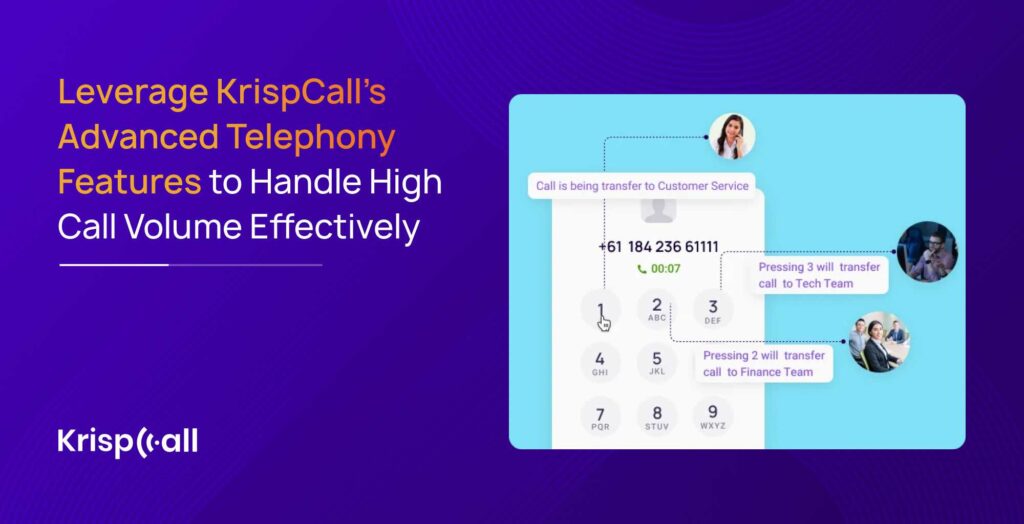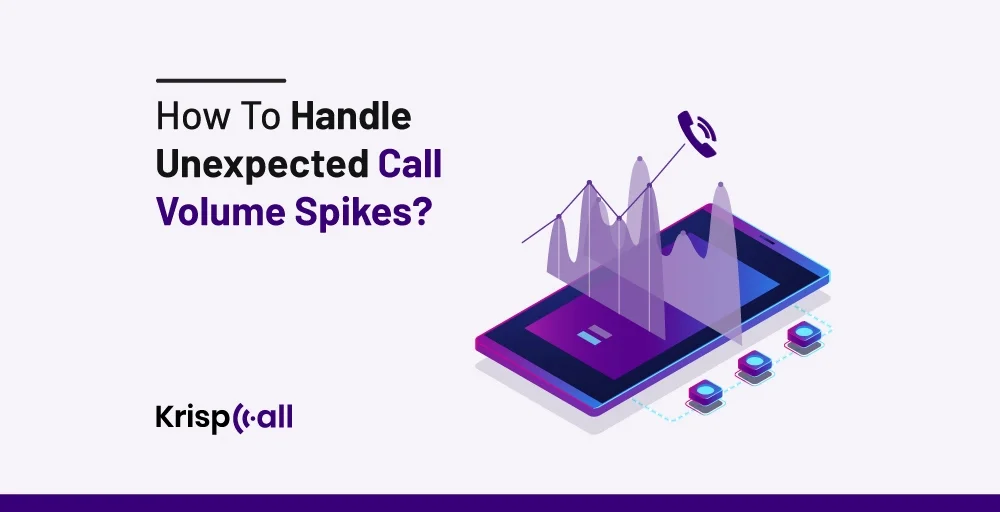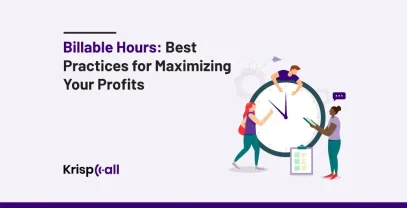Have you ever experienced sudden changes in calls or unexpected volume spikes while conversing from your call center? 📈
Do you want to stop volume spikes? And wondering what to do?
Don’t worry!
In this blog, we will cover every piece of information related to handling unexpected call volume spikes, including reasons behind unexpected call volume spikes, challenges they pose, and how to handle them.
So, let’s get started.
🔑 KEY HIGHLIGHTS
- The overflow of customers reaching the call centers is the main reason for the unexpectedly high call volume.
- High call volume spikes can negatively affect brand reputation if not managed properly.
- Some ways that you can adopt to effectively handle unexpected call volume spikes include offering omnichannel support, scheduling agents, implementing self-service options, and so on.
- To handle unexpected call volume spikes, KrispCall provides advanced features, such as IVR, call forwarding, call transferring, and shared phone numbers.
What Causes Unexpected High Call Volume?
There are numerous reasons behind the unexpectedly high call volume. Sometimes, the overflow of customers reaching the call center can be the reason. In rare cases, the external environment could also be the reason.
For example, the global pandemic can cause panic, eventually increasing the number of incoming calls to the call center and creating an outage or technical glitch.
Some of the other causes include:
- Peak periods: Certain times of the year, such as holidays and sales seasons, can result in increased call volumes.
- Successful marketing campaigns: If the marketing campaign is successful, it can directly increase call volume.
- External Events: External events like launching a product or service can cause spikes in calls. It’s because customers become eager for features, benefits, pricing, and availability of the new products.
- Technical Issues: Some system failures, such as a website crash, software glitch, or network connectivity problem, can cause many customers to contact the support system. This results in sudden call volume spikes.
Challenges Posed By Unexpected Spikes in Call Volume?
Unexpected spikes in call volume can have numerous impacts, such as operational inefficiencies, company reputation, and customer experiences.
Some challenges are listed below:
1. Staffing challenges
In some high seasons, the unpredictable increase in call volume always creates an imbalance between the inbound call volume received and available agents. When there isn’t enough staffing to handle calls, this leads to longer waiting times, which can cause customer frustration.
2. Productivity concerns
Unexpected increments in call volume can stress call center agents, eventually resulting in low motivation, spirit, and burnout. These effects can negatively impact the company’s efficiency and productivity, compromising customer experience quality.
3. Operational inefficiencies
Some sudden changes in call volume can disrupt the call center’s system of work. This can cause problems with call routing, make longer calls, and result in agent dissatisfaction. Despite frustrating customers, this will negatively affect the company’s efficiency.
4. Brand Reputation
When lots of calls come in unexpectedly, there might not be enough agents to answer them all quickly. As a result, customers have to wait a long time for their calls to be answered, which makes them unhappy. If customers have bad experiences, they might say negative things about the company, which can make other people think poorly of it, too. This negatively affects brand reputation.
Get a Call Center Software to Handle High Call Volume
Own a feature-rich call center software to manage unexpected call volume spikes at a super affordable price.
Select numbers :
How To Handle Unexpected Call Volume Spikes? 10 ways
Addressing the causes of call volume spikes can be the first step in handling unexpected spikes.
Some other ways to handle unexpected call volume spikes can be:
1. Maximize contact center capacity
Maximizing the call center’s capacity can be a good strategy to handle unexpected call volume spikes. These are the things you can look up to:
- Assign all available agents to handle calls.
- You can use automation for post-call tasks to save time.
- In times of high traffic, training or meetings can be postponed.
2. Provide self-service options
You can use chatbots and IVR systems to handle some common customer queries. This will reduce the need for human agents to be involved, allowing agents to focus on more complex and vital issues. Additionally, adding an FAQ page can be an option to address frequently asked questions and handle call spikes.
3. Offer omnichannel support
Providing customers with multiple contact channels, such as emails, live chat, and social media, can help stop call spikes. Integrating all these channels will ensure a seamless customer experience and reduce unexpected volume spikes.
4. Automate workflows
Use workflow automation to help with tasks after calls, like logging calls, entering data, or sending follow-up emails. This saves time and streamline workflow. Ultimately, it increases agents’ efficiency, making it easier to handle call spikes.
5. Call monitoring
Continuous monitoring can help you observe the volume changes before they occur, reducing the chances for unusual spikes or dips. Tools like real-time dashboards, reports, and alerts can be used to track key metrics like call volume, service level, occupancy, and abandonment rate.
6. Agent’s empowerment
Another way to handle unexpectedly increased call volume is to empower agents with proper guidance and training. You can empower your agents with relevant training, including AI-assisted processes and knowledge-based training programs. Training session emperors’ agents to handle complex customer inquiries during peak call periods.
7. Overflow management
If call queues are overflowing, you can use automated tools and route calls to partners to reduce the high volume spikes. This will eliminate the long time waits and maintain caller satisfaction.
8. Offer live chat
Providing live chat platforms digitally in online platforms can reduce the high volume spikes. It allows customers to get answers quickly and with the correct answers. This will also add value to the customer experience.
9. Scheduling agents
Businesses should predict the busy times of the day when they receive high call volume and schedule agents based on the pick-calling times. This includes increasing staff levels during periods of high call volume. By having proper scheduling in place, businesses can optimize resources and ensure timely assistance for customers.
10. Implementing a call deflection strategy
Call deflection can transfer incoming calls to alternative channels, like live chat and self-help services on the website, which can help ensure agent availability during high-volume spikes.
Leverage KrispCall’s Advanced Telephony Features to Handle High Call Volume Effectively

If you wish to effectively handle high call volumes, you can choose KrispCall. KrispCall provides advanced telephony features that will help you save time, increase productivity, and effectively handle high call volumes.
KrispCall provides a phone tree (IVR) feature to help callers gain required information through menu options without talking to live agents. If necessary, the IVR also provides the option to route their calls to a specific department where suitable agents can solve their problems. This will reduce the high call volume in a particular department, increasing productivity and handling high call volume.
In the case of busy hours, KrispCall’s call forwarding feature allows agents to forward the call received on their phone number to another agent’s number, ensuring no calls go unanswered. This feature solves the caller’s problems by answering as soon as possible.
Moreover, if callers need clarification about the number of departments, the call transferring feature allows them to transfer the call to the experts. The feature can also handle high-volume call spikes by transferring calls to available agents, reducing traffic in other agents.
Additionally, working in a team gets easier with KrispCall’s shared phone number feature, which allows you to share your numbers with your co-workers. Sharing numbers with teams helps to boost productivity by making calls and texts collectively. Everyone with a shared number can answer the calls, reducing customers’ frustrations.
Final Thoughts
Managing unexpected high call volume spikes in every business is essential for providing excellent customer service. Businesses can prepare for call spikes by analyzing the root causes behind this.
The major reasons behind unexpected high call volume spikes include successful marketing campaigns, deflects in products, technical issues, etc.
To handle such unexpected call volume spikes, call centers can implement strategies like using IVR systems, offering Self-Service Options, and omnichannel support. These strategies help handle call center spikes and add value and trust to the brand with a smooth customer experience.
As an old saying, “ Precaution is better than cure.”
So, to be prepared for unexpected call volume in the future, you should consider investing in the right software. KrispCall provides features like Call forwarding, call transferring, shared phone numbers, IVR, and more to help you handle unexpected call volume spikes.
FAQ
What does unusual call volume mean?
Unusual call volume means a surprising increase and decrease in incoming call volumes caused by various factors like service disruptions, external events, promotional campaigns, etc.
How many calls are considered high volume?
A rise in incoming calls of up to 10% compared with average daily calls is considered a high-volume call, but it depends on the business type and size.
How can you handle unexpected call volume spikes or dips when scheduling agents?
Businesses should predict the busy times and schedule agents based on the peak times to handle unexpected call volume increases. This will reduce wait time, boosting quality service and efficiency in a call center.





